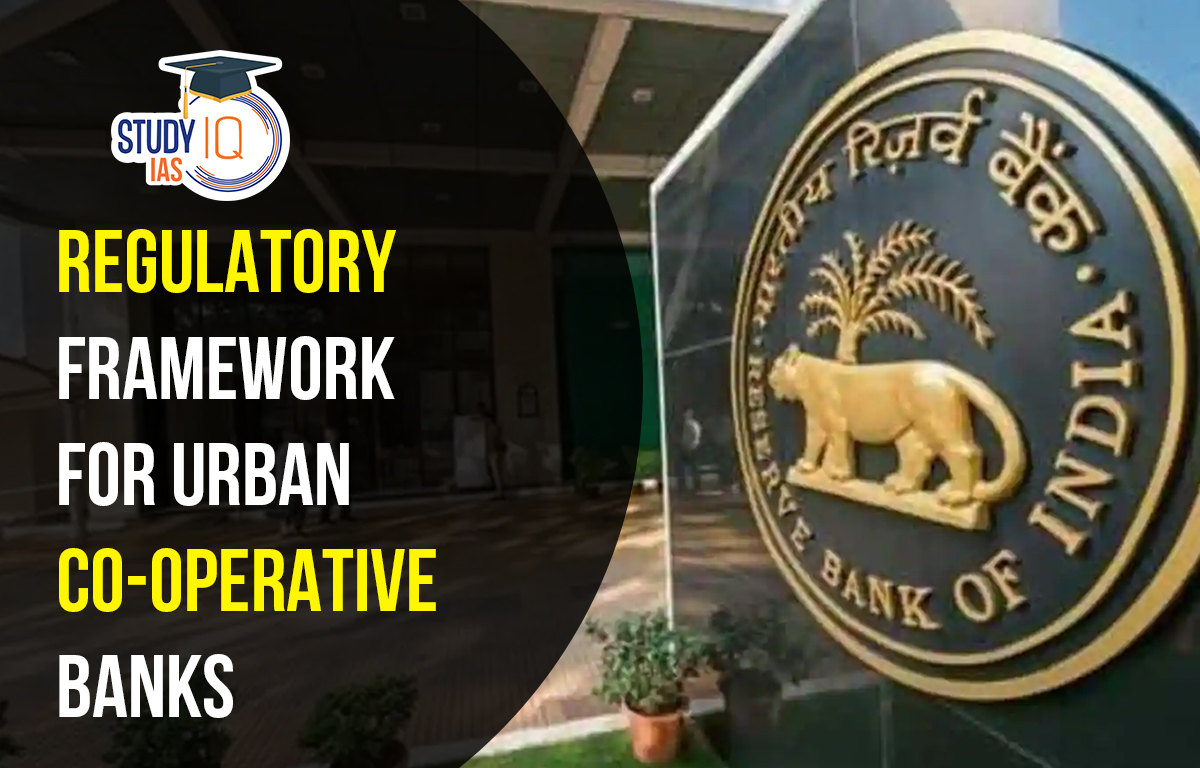Table of Contents
History of Urban Co-operative Banks in India
Urban Co-Operative Banks are registered as cooperative societies under the provisions of, either the State Cooperative Societies Act of the State concerned under the provisions of the or the Multi State Cooperative Societies Act, 2002.
Duality of control over the UCB: It is regulated by the Registrar of Cooperatives and also by the RBI.
-
- Reserve Bank regulates and supervises the banking functions of UCBs under the provisions of Banking Regulation Act, 1949.
- UCB registered under the State Cooperative Societies Act are regulated and supervised by the Registrar of Cooperative Societies (RCS) of the State concerned.
- UCB which are set up under the Multi State Cooperative Societies Act, 2002 are regulated by the Central Registrar of Cooperative Societies (CRCS).
Need of Categorisation of Urban Cooperative Banks
- RBI had formed the Expert Committee on UBCs in 2021, under the Chairmanship of former Deputy Governor N. S. Vishwanathan.
- It looked into the issues in urban co-operative banking sector and recommended suitable regulatory/ supervisory changes for strengthening the sector.
- Current regulatory framework classifies UCBs into two tiers – Tier I and Tier II.
- Urban Co-Operative Banks Objective: To balance the spirit of mutuality and co-operation more prevalent in banks of smaller sizes and those with limited area of operation vis-a-vis the growth ambitions of the large-sized UCBs and undertake more complex business activities.
- Given the heterogeneity in the cooperative sector, a tiered regulatory framework is required.
Highlights of Urban Cooperative Banks
- UCBs have been categorized into following four tiers for regulatory purposes:
- Tier 1: All unit UCBs and salary earners’ UCBs (irrespective of deposit size), and all other UCBs having deposits up to Rs 100 crore;
- Tier 2: UCBs with deposits more than Rs 100 crore and up to Rs 1000 crore;
- Tier 3: UCBs with deposits more than Rs 1000 crore and up to Rs 10,000 crore;
- Tier 4: UCBs with deposits more than Rs 10,000 crore.
- Net Worth Requirement: A minimum net worth of Rs 2 crore for Tier 1 UCBs operating in a single district and Rs 5 crore for all other UCBs (of all tiers) has been stipulated.
- This is expected to strengthen the financial resilience of the banks and enhance their ability to fund their growth
- CRAR Requirement: RBI prescribed minimum capital to risk weighted assets ratio requirement for UCBs to strengthen their capital structure.
- Minimum Capital to Risk (Weighted) Assets Ratio (CRAR) requirement for Tier 1 banks is retained at the present prescription of 9% under current capital adequacy framework based on Basel I.
- For Tier 2, Tier 3 and Tier 4 UCBs, minimum CRAR has been revisedto 12%.
- New Branches: To boost growth opportunities in the sector, RBI introduced automatic route for branch expansion to UCBs which meet the revised Financially Sound and Well Managed (FSWM) criteria.
- It permits them to open new branches up to 10% of the number of branches as at the end of the previous financial year.
- Housing Loans, Working Group: RBI decided to assign the risk weights on the basis of Loan to Value (LTV) Ratio alone which would result in capital savings.
- This will be applicable to all Tiers of UCBs.
- Capital Augmentation: Working Group comprising the representatives from RBI, SEBI and Ministry of Co-operation, Government of India has been constituted, to examine the issues concerning recommendation for capital augmentation under the provisions of Section 12 of the Banking Regulation Act, 1949.
Capital Adequacy Ratio (CAR)
It is the ratio of a bank’s capital to its risk.
It is also known as the Capital to Risk (Weighted) Assets Ratio (CRAR).
It is the ratio of a bank’s capital to its risk-weighted assets and current liabilities.


 TNPSC Group 4 Admit Card 2025 Out at tnp...
TNPSC Group 4 Admit Card 2025 Out at tnp...
 Species Added to India's Flora and Fauna...
Species Added to India's Flora and Fauna...
 Daily Quiz 02 July 2025
Daily Quiz 02 July 2025





















